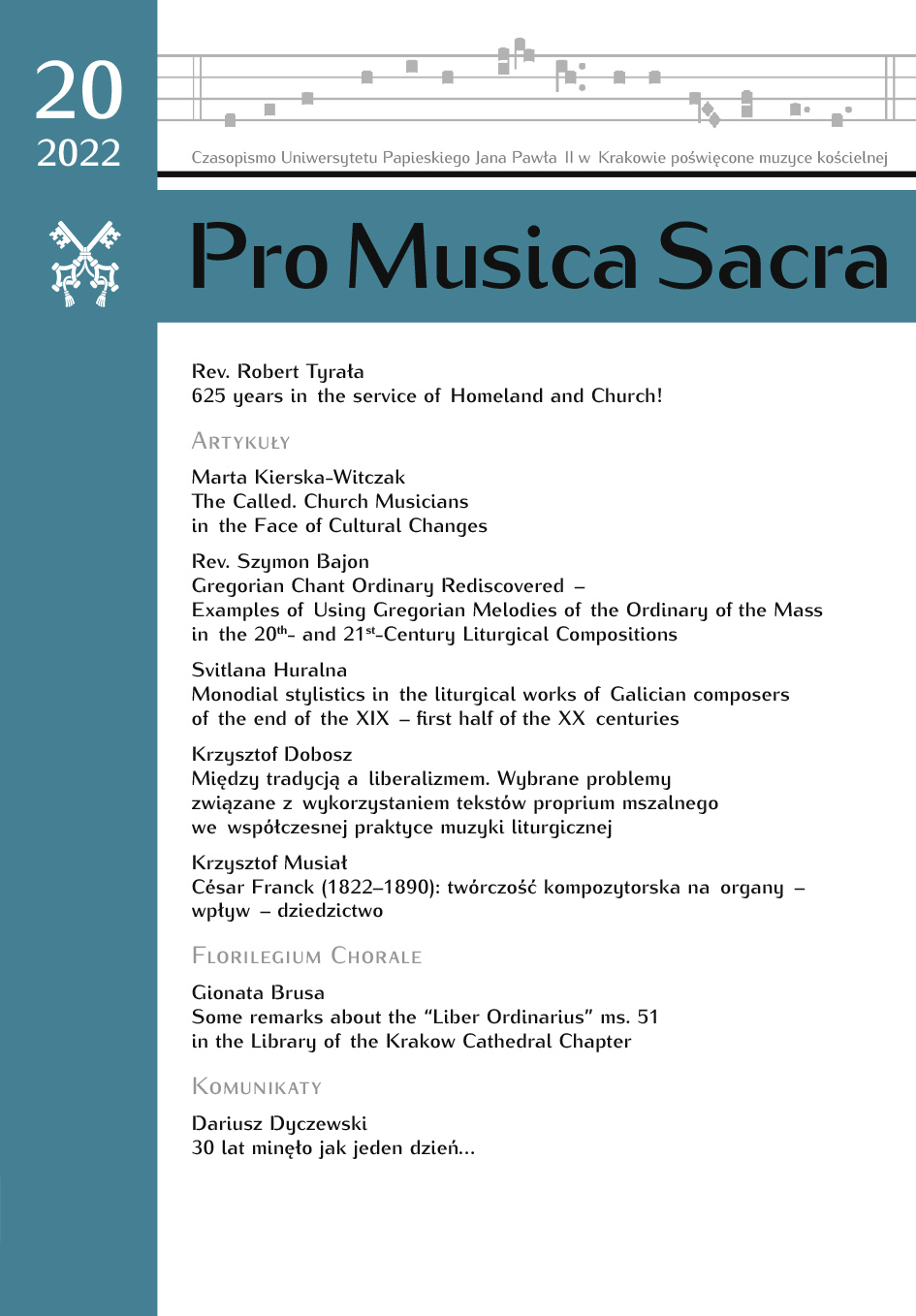Gregorian Chant Ordinary Rediscovered – Examples of Using Gregorian Melodies of the Ordinary of the Mass in the 20thand 21st-Century Liturgical Compositions
DOI:
https://doi.org/10.15633/pms.2002Keywords:
Gregorian chant Ordinary, liturgical music legislation, choral compositionsAbstract
Official documents referring to laws and principles of music in the liturgy of the Roman Catholic Church in Roman Rite remind that the Church acknowledges primacy of Gregorian chant but also allows other forms of singing, especially polyphony. It is, however, recommended that people’s participation in the singing of Ordinarium Missae should not be completely excluded. It can be slightly problematic to put those guidelines into practice. Certain suggestions of how to engage both people and a polyphonic choir may be found in selected compositions by Wolfram Menschick, Rev. Zdzisław Bernat and Katarzyna Danel.
References
Filaber A., Prawodawstwo muzyki kościelnej, Warszawa 2011.
Menschick W., Missa choralis minima, “Liturgia Sacra. Liturgia – Musica – Ars” 6 (2000) nr 1 (15), s. 161–163.
Pawlak I., Muzyka liturgiczna po Soborze Watykańskim II w świetle dokumentów Kościoła, Lublin 2001.
Ratzinger J., Nowa Pieśń dla Pana, Kraków 2005.
Sobór Watykański II, Konstytucje. Dekrety. Deklaracje, Poznań 2002.
Waloszek J., Teologia Muzyki, Opole 1997.
Zając A., Chór i schola w liturgii: wymagania Kościoła i sposób ich realizacji w Polsce, “Liturgia Sacra. Liturgia – Musica – Ars” 6 (2000) nr 1 (15), s. 45–63.
Downloads
Published
Issue
Section
License
Copyright (c) 2022 Szymon Bajon

This work is licensed under a Creative Commons Attribution 4.0 International License.
Authors who publish with this journal agree to the following terms:
- Authors retain the copyright and full publishing rights without restrictions, and grant the journal right of first publication with the work simultaneously licensed under a Creative Commons Attribution 4.0 International License that allows others to share the work with an acknowledgement of the work's authorship and initial publication in this journal.
- Authors are able to enter into separate, additional contractual arrangements for the non-exclusive distribution of the journal's published version of the work (e.g., post it to an institutional repository or publish it in a book), with an acknowledgement of its initial publication in this journal.
- Authors are permitted and encouraged to post their work online (e.g., in institutional repositories or on their website) prior to and during the submission process, as it can lead to productive exchanges, as well as earlier and greater citation of published work (See The Effect of Open Access).

